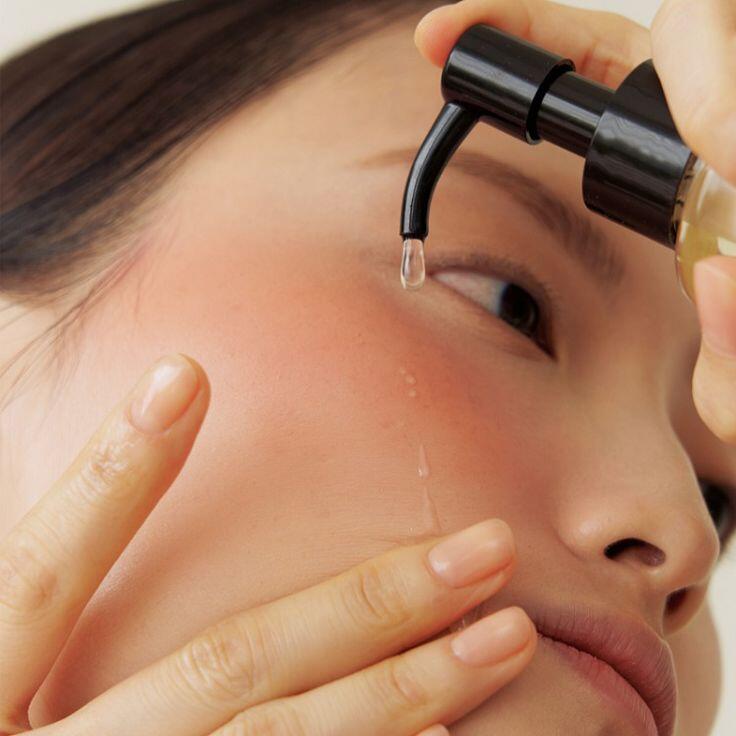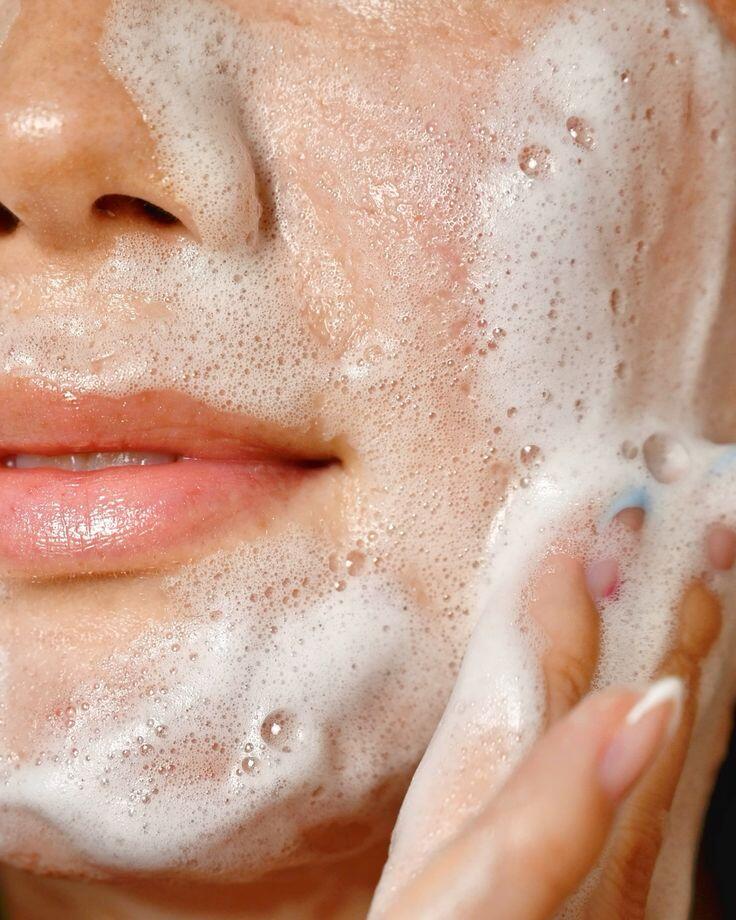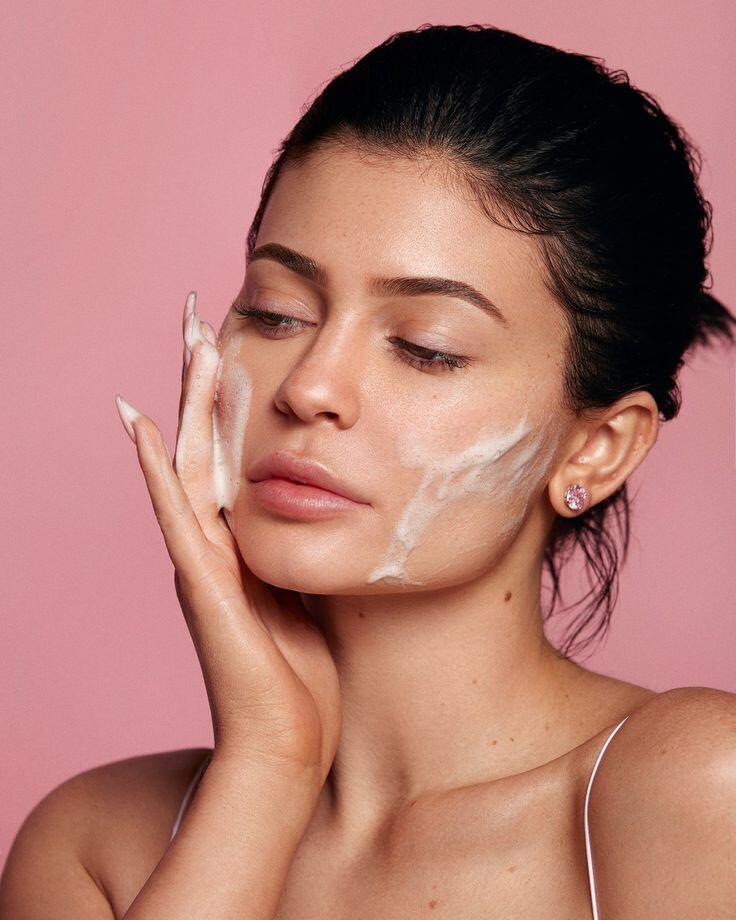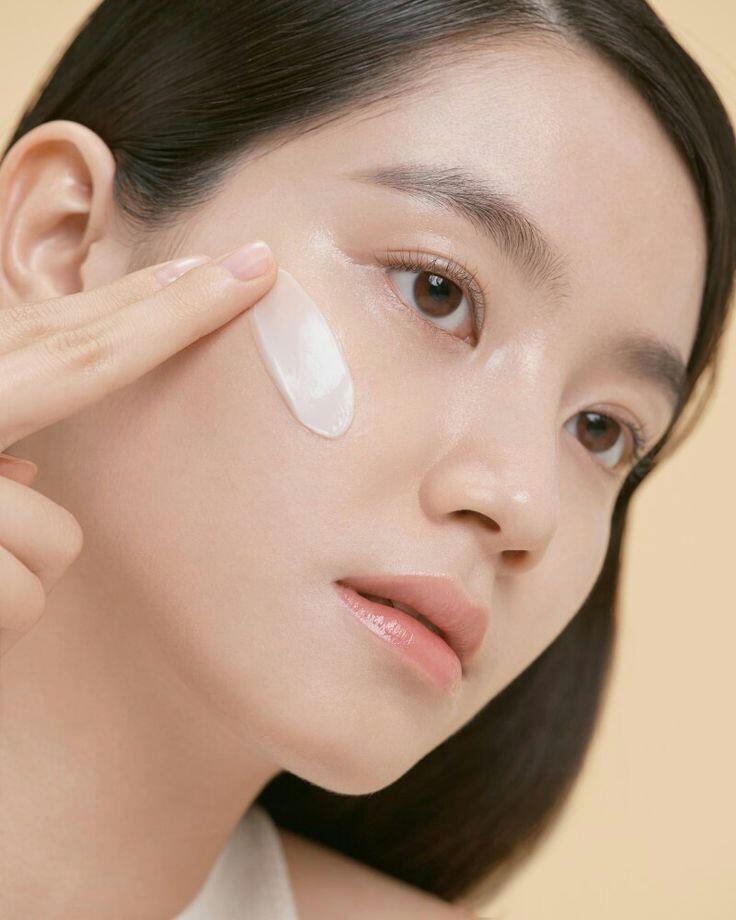1. What is a cleansing oil?
There are two main types of cleansing oils: natural and specialized. Natural cleansing oils are derived from natural ingredients such as honey, coconut oil, and olive oil. They are easy to find, inexpensive, and safe to use. Specialized cleansing oils are produced by cosmetic companies and contain natural extracts that reduce the oil’s heaviness, preventing skin congestion.

Cleansing oils effectively remove stubborn makeup and dirt from the skin.
While you only need to soak a cotton pad with micellar water, using a cleansing oil requires an additional step of emulsification, which will be explained in this article.
2. Why is emulsification necessary when using a cleansing oil?
Emulsification is the process of transforming the oil on your skin into a milky liquid, ensuring the removal of oil and impurities. It involves applying warm water to the oil on your face and gently massaging it until the oil turns white or becomes milky. This process not only effectively removes makeup and impurities but also cleanses your pores.

Emulsification transforms the oil on your skin into a milky liquid, removing all traces of dirt and makeup.
3. Steps to Emulsify Cleansing Oil
Step 1: Wash and dry your hands thoroughly.
Step 2: Dispense 4-5 drops of cleansing oil into your palm and rub your hands together to warm the oil. Gently massage the oil onto your face in circular motions, starting from the bottom and moving upwards and outwards. Pay extra attention to areas with heavy makeup, such as the eyes, nose, and lips.

Apply the cleansing oil evenly across your face to ensure the removal of all impurities.
Step 3: Wash your hands with soap to remove any remaining cleansing oil.
Step 4: Pour warm water into your palms and gently massage your face until the oil turns into a white, milky liquid. Repeat this process 2-3 times until all the oil is removed, and your skin no longer feels oily.

Emulsification involves adding warm water to your palms and then massaging your face until the oil turns white and milky.
Step 5: Use a foaming facial cleanser to remove any residual oil. Choose a cleanser that creates a rich lather, as the foam can penetrate deep into your pores, effectively removing excess oil and impurities.
Step 6: Pat your face dry with a soft towel or allow it to air dry. Proceed with your regular skincare routine.

After using a cleansing oil, follow up with a facial cleanser and your regular skincare products.
Emulsification is crucial when using cleansing oils, as skipping this step can leave oil residue on your skin, leading to clogged pores, acne, and skin irritation. Therefore, it is essential to emulsify correctly. There are various cleansing oils available on the market, suitable for different skin types. Choose one that suits your skin’s needs to ensure a comfortable and effective cleansing experience.
Unlock the Secret to an Affordable and Effective DIY Acne Treatment Gel
Introducing the ultimate solution for acne-prone skin: our specially formulated acne treatment gel. This powerful yet gentle formula is designed to tackle blemishes and promote clear, healthy skin. With its unique blend of active ingredients, this gel works to soothe inflammation, unclog pores, and balance the skin’s natural oil production. Say goodbye to stubborn acne and hello to a radiant, confident complexion. Experience the difference and embrace the path to clearer skin today.



































